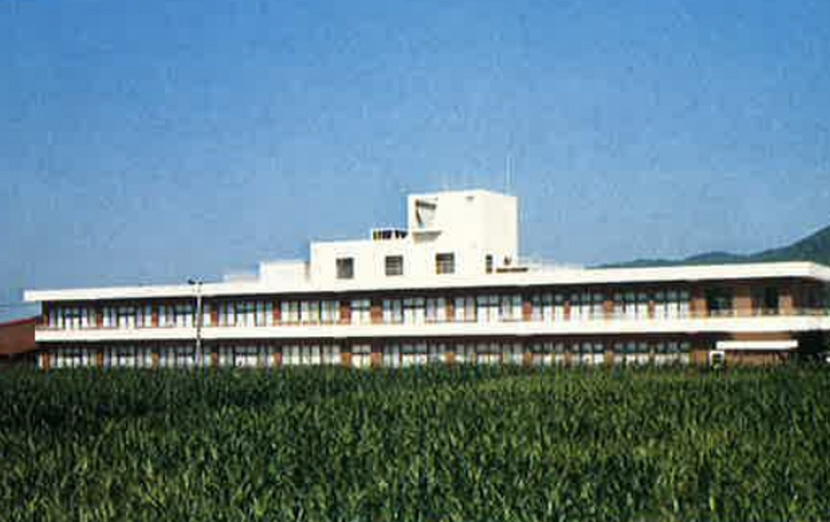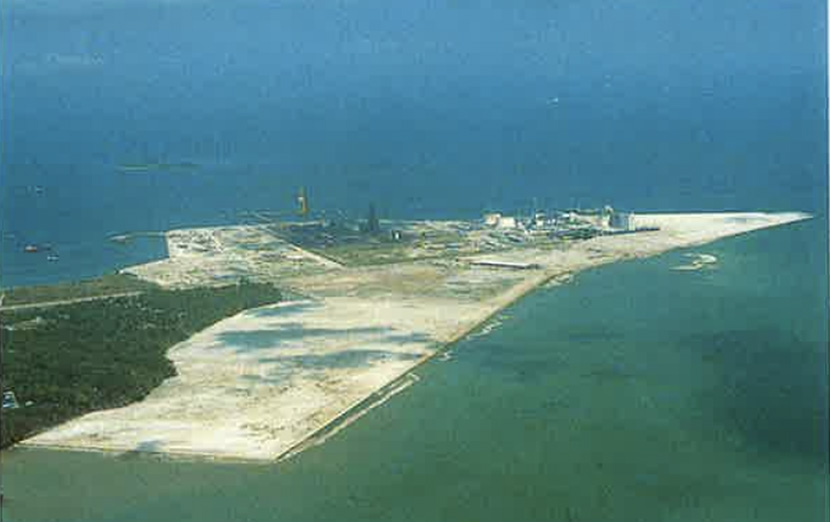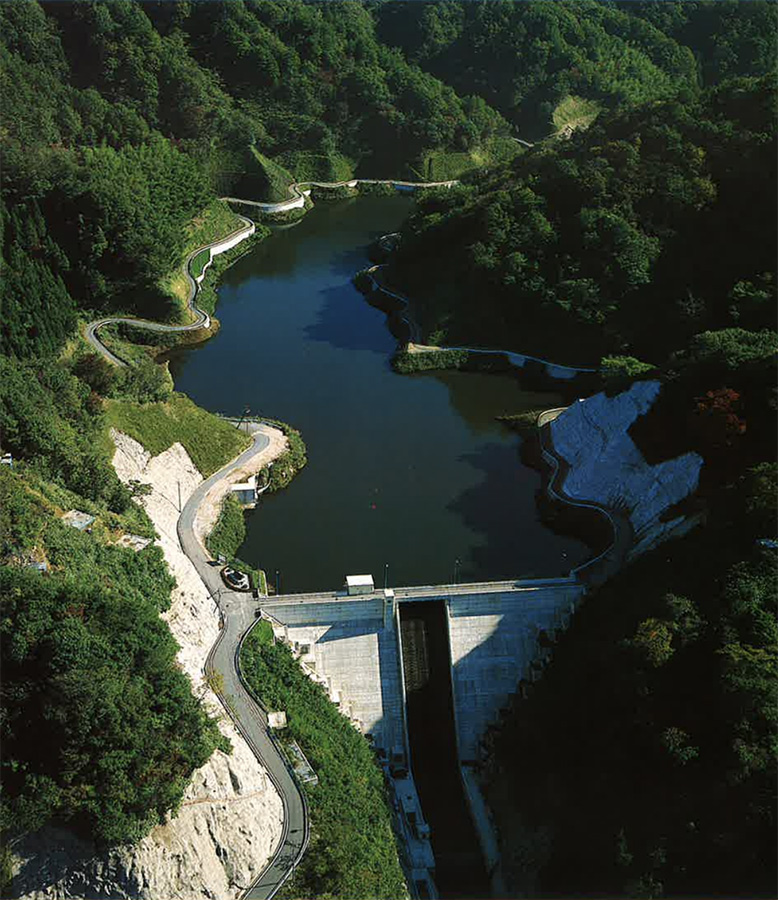- TOYO HISTORY
- LANGUAGE


Advance into building construction – Surviving the “winter of the construction industry”
Advance into building construction (1975-1979)
The wave of recession triggered by the Oil Crisis, etc. caused Toyo Construction to free itself from the system of dependency on a specialized field of work, namely, dredging, where the volume of business was shrinking, and to adopt reforms by integration, which enabled a wide-ranging response to the small volume, diversified demand under recessionary conditions.
During this period, there was an increasing tendency, in both the public and the private sectors, to order civil engineering projects that included construction and construction projects that included civil works. Thus, an advance into building construction was indispensable for expanding the Company’s business range, as building accounted for 60% of construction investment at the time. In January 1976, the Board of Directors formally decided to enter the field of building construction.
In the entry period, accumulating a track record was of the utmost importance for Toyo Construction as a late-comer to building construction. Thanks to diligent efforts, the Hokkaido Branch received an order in May of the same year, and with this as an opening move, the Tokyo Branch (at the time) and offices in other regions also succeeded in winning orders. The total value of orders received in FY 1976 was ¥3.4 billion, and following this strong start, Toyo continued to make steady progress.
With deterioration of the domestic order environment, Toyo ambitiously promoted its overseas business, which was a step ahead, and won a number of jobs, which included port construction in northern Mindanao and the Manila-Cavite coastal reclamation project in the Philippines, reclamation work for the Changi Airport in Singapore, dredging in the Khor Al Zubair district of Iraq, and the Sharjah dredging project in the United Arab Emirates. Toyo also established a joint venture, CCT, in the Philippines in April of 1976 in expectation of extending its local sales base in that country.

Seijin Hospital (Kumamoto Pref.)

Construction of Sakai 7-3 district breakwater (Osaka Pref.; prefab steel sheet pile cell construction method developed by Toyo Construction)

Naruo Reclamation Site (Hyogo Pref., January 1978)

Newspaper advertisement announcing the start of sales of the Naruohama Industrial Center (Feb. 7, 1978).
On the other hand, during this period, the Naruo Project finally reached the stage where sales of land could begin. Sales began with land for public use, beginning with land for an athletic field for Hyogo Prefectural Nishinomiya South Senior High School, and also included the site of the Nishinomiya East Municipal Refuse Disposal Center, etc.
For general land sales, the Company established a Sales Section in its Naruo Division to conduct sales activities. In February 1977, sales began in earnest under the name Naruohama Industrial Center.
Sales of Naruohama, which was the original purpose of establishing the Company, were finally realized after 47 years.
The main events
| March 1976 | Establishment of Construction Department and Construction Sales Department (advance into building construction). |
|---|---|
| April 1976 | Establishment of joint venture company, CCT, in the Philippines. |
| June 1976 | Death of President Hachiro Fujii and company funeral. Mr. Koji Otsuki named new President. |
| February 1978 | Start of general sales of Naruohama Industrial Center |
| June 1978 | Mr. Yuji Yoshimura named President. |
| July 1979 | Ceremony commemorating the 50th Anniversary of the Company, and establishment of the Toyo Construction Management Philosophy. |
Toward the post-Naruo era (1980-1984)
Sales of the Naruohama Industrial Center began in fiscal year 1977. The following fiscal year, 17 contracts were materialized, followed by 14 in FY 1979 and 11 in FY 1980. During the 5 year period up to 1984, 55 contracts for land with the total area of 471,345 m2 were sold.
During these years, the growth of public works-related budgets continued to be either zero or minus growth, and private-sector construction demand was also stagnant. This period has been called the “winter of the construction industry.” Under these difficult circumstances, sales of land in the Naruohama Industrial Park made an important contribution to the Company’s financial performance. The gross profit from sales in this project continued to account for 20% to 30% of the total, thus supporting the framework of the Company as a whole.
By the end of FY 1984, sales of more than 90% of the Naruohama Industrial Center had been completed. Thus, increasing orders received and securing profitability became critical issues as Toyo entered its post-Naruo era.
In its civil construction business, Toyo put great effort into securing orders and profits by development of computer-based “Information Management Construction” and sales activities utilizing the planning capabilities and technology development capabilities cultivated up to the time. Thanks to these efforts, Toyo was able to participate in national projects such as the Hitsuishi Bridge in the Honshu-Shikoku Bridge system, reclamation work for the Tokushima Airport, and others in spite of the recession.
In building construction, Toyo worked out an active expansion strategy based on its track record over the 5 years since entering this field. Not limited to simple contracting work, Toyo Construction took on the challenge of sales in a field that was unknown territory for the Company, including sales in which it actively proposed sites to developers, tenant recruiting, and sales collaboration, and advanced in this field while overcoming risks one by one. In FY 1979, the value of orders received was ¥6.2 billion, but this increased almost five-fold growth over the next five years, with orders reaching \30.2 billion in fiscal 1984.
In expectation of further growth in the future, the Technical Research Laboratory was also opened during this period, and various experimental devices not seen in other companies were installed, including centrifugal loading equipment, a three-dimensional water basin, etc.

Reclamation at Labuan Island (Malaysia)

Hyogo Prefectural Gymnasium (Hyogo Pref.)

Shiota Dam (Shimane Pref.)
The main events
| April 1980 | Construction Departments established in the Tokyo, Hokuriku, and Osaka Branches. Construction of a 3-dimensional water basin at the Technical Research Laboratory (now Naruo Research Center). |
|---|---|
| October 1980 | Received order for reclamation work at Labuan Island, Malaysia. |
| June 1982 | Mr. Teruaki Kobatake named President. |
| January 1983 | Narawa Materials Center opened. |
| August 1983 | Received order for the second phase of reclamation at Labuan Island, Malaysia. |
| March 1984 | Naruo Engineering Center opened. |
| April 1984 | Yokohama Branch opened. |
| August 1984 | Irregular wave generator introduced at the Technical Research Laboratory. |
| October 1984 | Received order for construction of the mass of Shioda Dam. |
| December 1984 | Centrifuge loading equipment was introduced at the Technical Research Laboratory. |



